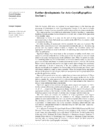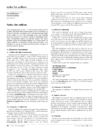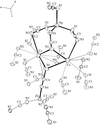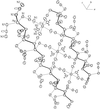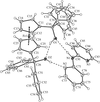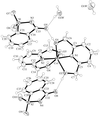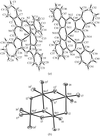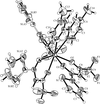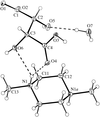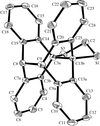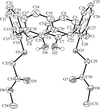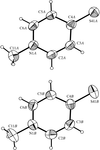issue contents
January 2002 issue

Cover illustration: View of the supramolecular structure exhibited by 2,4-dihydroxy-1,3-bis(methoxycarbonylmethoxy)calix[4]arene. See Coles, Hall & Hursthouse [Acta Cryst. (2002), C58, o29-o31].
editorial
Free 

international union of crystallography
Free 

inorganic compounds
Download citation


Download citation


The structure of Cs2[AgZn(SCN)5] contains units of composition AgZn(SCN)3 lying on a mirror plane and bonded together through Cs+ ions and thiocyanate groups. The crystal studied contained equal numbers of inversion twins.
Download citation


Download citation


Single crystals of Ca3Mn2O7 were prepared in an optical floating-zone furnace. The symmetry, which was previously reported as tetragonal according to powder X-ray diffraction studies, is shown to be orthorhombic, A21am.
Download citation


Download citation


The complex oxide MoVAlO7, vanadium aluminium molybdate, crystallizes in the orthorhombic system (space group Pnma). All the metal atoms and three O atoms lie on the mirror plane. Infinite strings of VO5 square pyramids associated by opposite basal edges develop along [010] and are surrounded by a sequence of eight corner-sharing alternating AlO6 octahedra and MoO4 tetrahedra.
Download citation


Download citation


The crystal structure of the ambient-pressure phase of vanadyl pyrophosphate, (VO)2P2O7, determined from single-crystal synchrotron data, consists of infinite two-leg ladders of vanadyl cations, (VO)2+, which are separated by pyrophosphate anions, (P2O7)4−.
Download citation


Download citation


A new variety of dihydroxysamarium chloride is presented. The orthorhombic structure is built up from the stacking of neutral layers stabilized via strong hydrogen bonds between the hydroxyl H atoms and the chlorides.
Download citation


Download citation


AgCo3PO4(HPO4)2 consists of edge-sharing CoO6 chains linked together by the phosphate groups and hydrogen bonds. The three-dimensional framework delimits two types of tunnels which accommodate Ag+ cations and OH groups.
Download citation


Download citation


AlPO4 tridymite forms an intermediate phase between 373 and 573 K with space-group symmetry P1121. The crystal structure is dynamically disordered and develops an incommensurate displacive modulation below 473 K.
Download citation


Download citation


CaCs2[Ag2(SCN)6]·2H2O forms a continuous structure where the Ag atoms form chains with S atoms in the c-axis direction. The chains are bonded together through Cs and Ca atoms. The crystal water of the structure is bonded to the Ca atoms, which lie on centers of symmetry.
metal-organic compounds
Download citation


Download citation


Download citation


Download citation


Download citation


Download citation


Download citation


Download citation


Download citation


Download citation


Download citation


Download citation


Download citation


Download citation


Download citation


Download citation


Download citation


Download citation


Download citation


Download citation


Download citation


Download citation


Download citation


Download citation


Download citation


Download citation


Download citation


Download citation


Download citation


Download citation


Download citation


Download citation


Download citation


Download citation


Download citation


Download citation


Download citation


Download citation


Download citation


Download citation


Download citation


Download citation


Download citation


Download citation


Download citation


Download citation


Download citation


Download citation


organic compounds
Download citation


Download citation


Download citation


Download citation


Download citation


Download citation


Download citation


Download citation


Download citation


Download citation


Download citation


Download citation


Download citation


Download citation


Download citation


Download citation


Download citation


Download citation


Download citation


Download citation


Download citation


Download citation


Download citation


Download citation


Download citation


Download citation


Download citation


Download citation


Download citation


Download citation


Download citation


Download citation


Download citation


Download citation


Download citation


Download citation


Download citation


Download citation


Download citation


Download citation




 journal menu
journal menu








